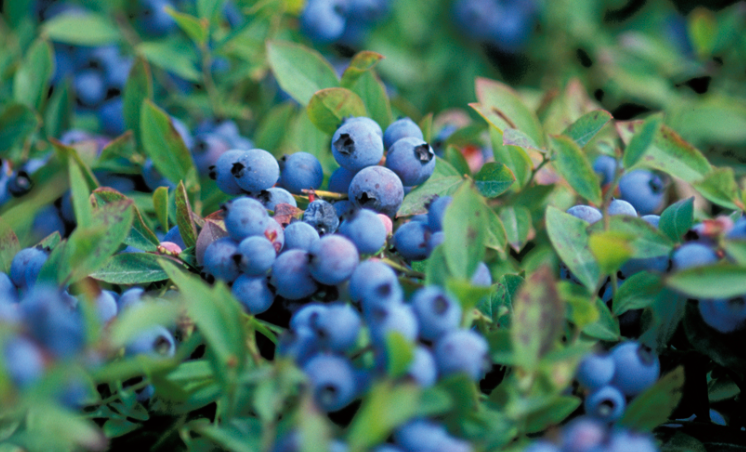New! Harvest Pics From Down East Maine’s Wild Blueberry Barrens
Plus: What To Do With All That Blue?

Awash in blue! In August, wild blueberry harvest season brings hundreds of workers to the fields, a sight that can only be witnessed in this region of the country. Washington County is home to half of Maine’s commercially harvested fields, and photographer/videographer Geoff Leighton was there for a first-hand look at the action.
Agricultural and nutritional researchers know a good thing when they see it. Capitalizing on a nutritional powerhouse like the blueberry means backing the right horse when it comes to delicious foods that provide high concentrations of healthy, disease preventing antioxidants.
But while some researchers are busy traveling to South America to seek alternatives to high-bush or so-called “grocery store” blueberries that have higher concentrations of antioxidants to fight cancer and heart disease, they neglect to mention that right here, in Maine and Canada, alternatives already exist. Wild, low-bush blueberries have the highest antioxidant capacity per serving, compared with more than 20 other fruits, including high bush blues, and they are right here in the states, being harvested by the billions of pounds every August.
Not only do we have access to these highly concentrated healthy fruits, we can see their evolution first hand. If you are assessing the source of your meal as part of understanding what on your plate is a cowboy and what is an alien, with wild blueberries, it’s easy to trace. August is wild blueberry harvest season, a time when berries cover the barrens in blue, and the race is on to pick, rake, and mechanically harvest every last one so they can provide us with their nutritional properties and sweet, tangy, complex tastes all year.
We talk about the unique qualities of the wild blueberry all the time, but a picture is worth a thousand words. Thanks to Geoff Leighton of Leighton Images, we can eavesdrop on what’s happening in the glorious, bountiful world of the wild blueberry right now, when the harvest is on.
 |
| Most farmers rely heavily on mechanized harvesting. Once a field is free of rocks, if farmers are lucky enough to have level ground, mechanized harvesting is more efficient and environmentally sound. |
 |
| Workers on the line at Merrill Wild Blueberries in Ellsworth, Maine. Up to 20,000 pounds of wild blueberries per hour can pass through processing lines like this one during harvest. |
Use Your Blues
While most wild blueberries are frozen immediately after harvesting using IQF technology to preserve all the taste and nutrition, you are certain to find pints fresh from the field at local stores and farmer’s markets.
What to do with all that blue?
Desserts? Pies? Cakes? You bet. But nothing’s off limits when it comes to blues. Canadian food columnist, Chef Dez reminds us that blueberries shine with meats such as steak, beef or lamb – their bold flavor stands up well as a sauce or jam accompaniment. Blueberries also add sweetness to vinegar, making them perfect for salads, and add a mellowing complex flavor. Chef Dez says, try this at home: take a handful of blueberries, wash and dry them, and toss with a teaspoon of balsamic and a sprinkle of sugar, if desired. Perfection!
That being said, it’s Endless Simmer that gets the wild blue ribbon for assembling 100 of the best ways to use blueberries (make sure to use wild for best taste and nutritional intensity). They outdid themselves by searching the blogosphere for the most deliciously conceivable ways to take advantage of the season. Choose from cocktails and chicken, honey ice cream, almond smoothies, blueberry mint ice cream sandwiches, marshmallow crisps, sauces and jellos. Endless Simmer, you get a Big Blue Bravo!




